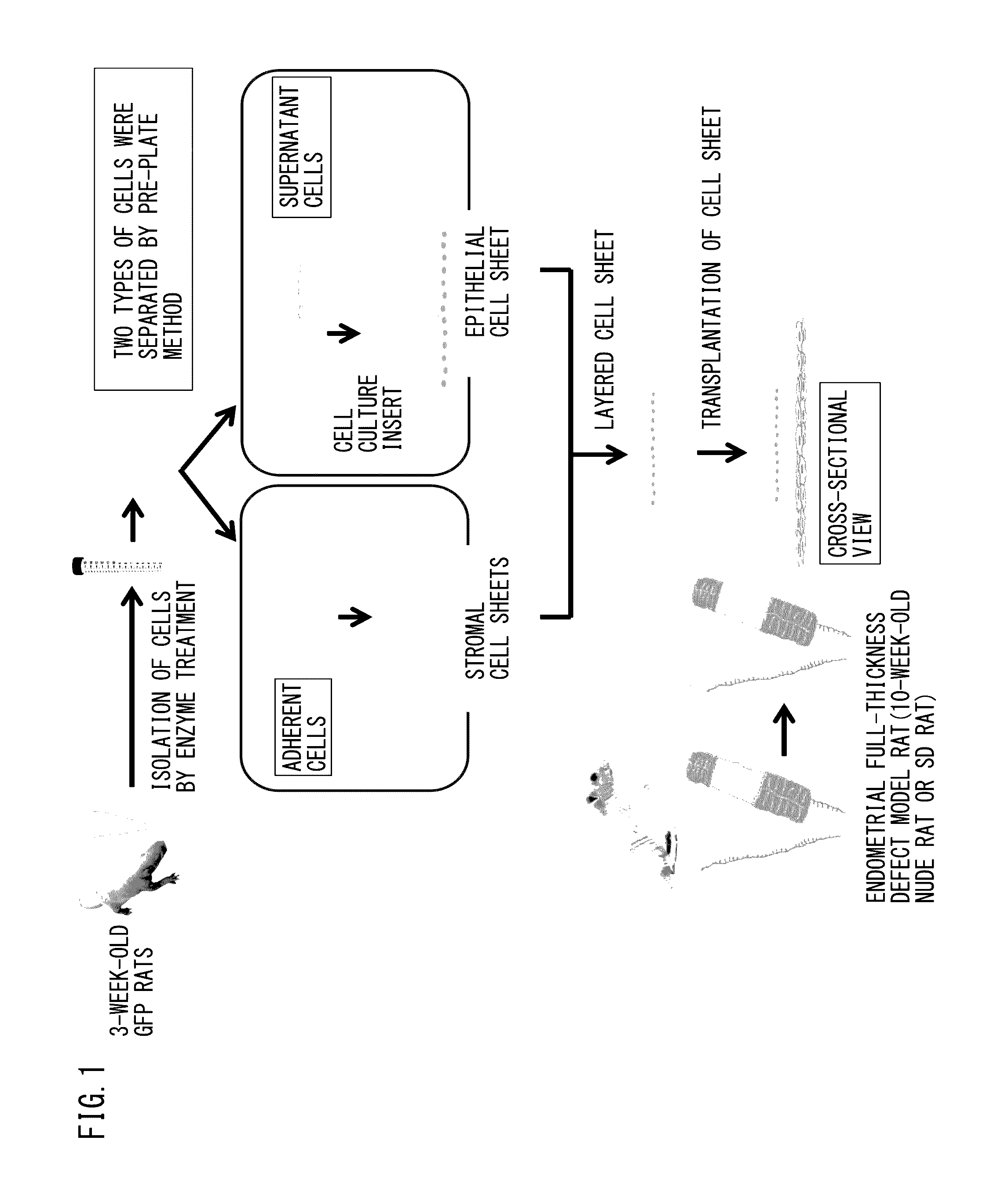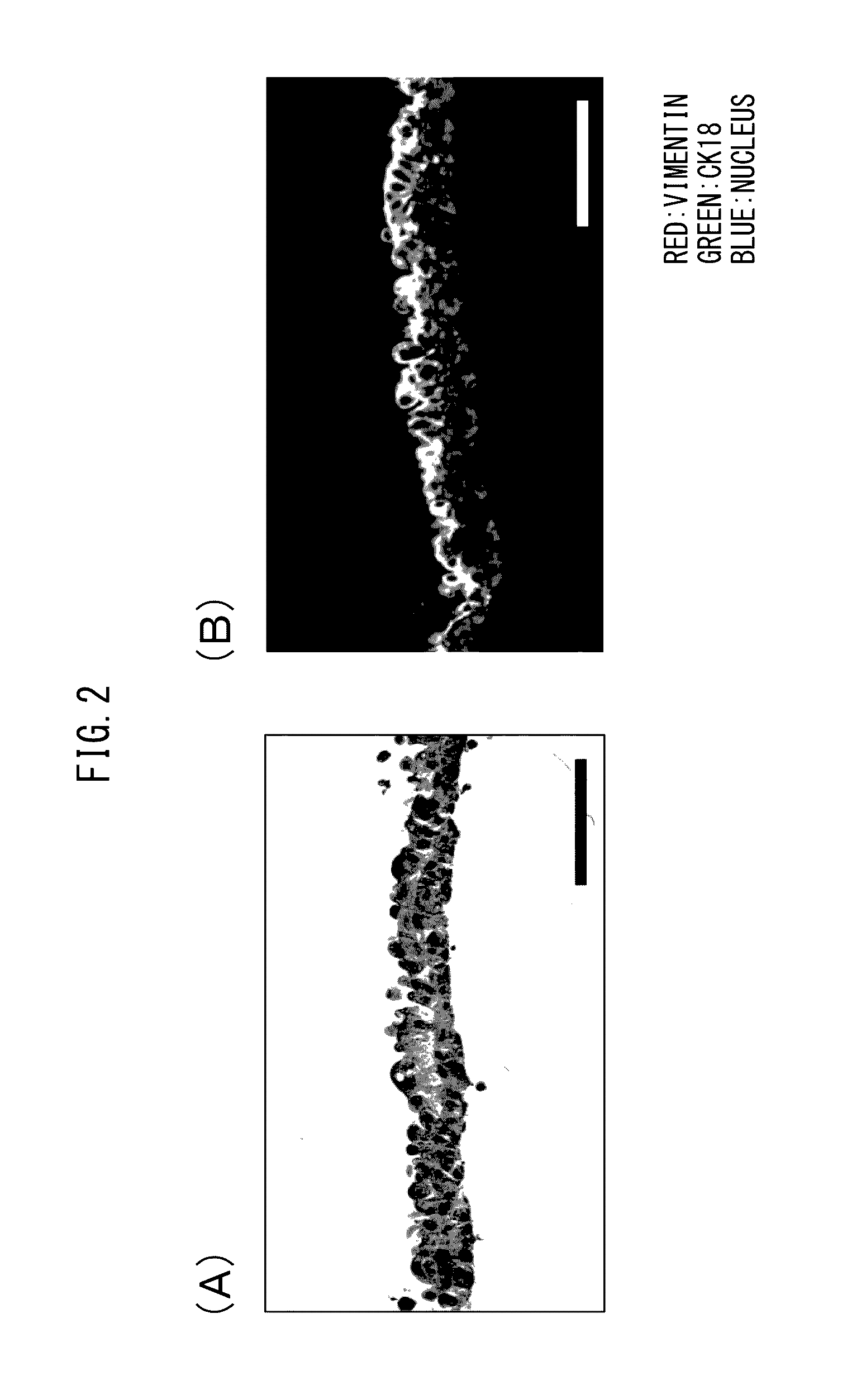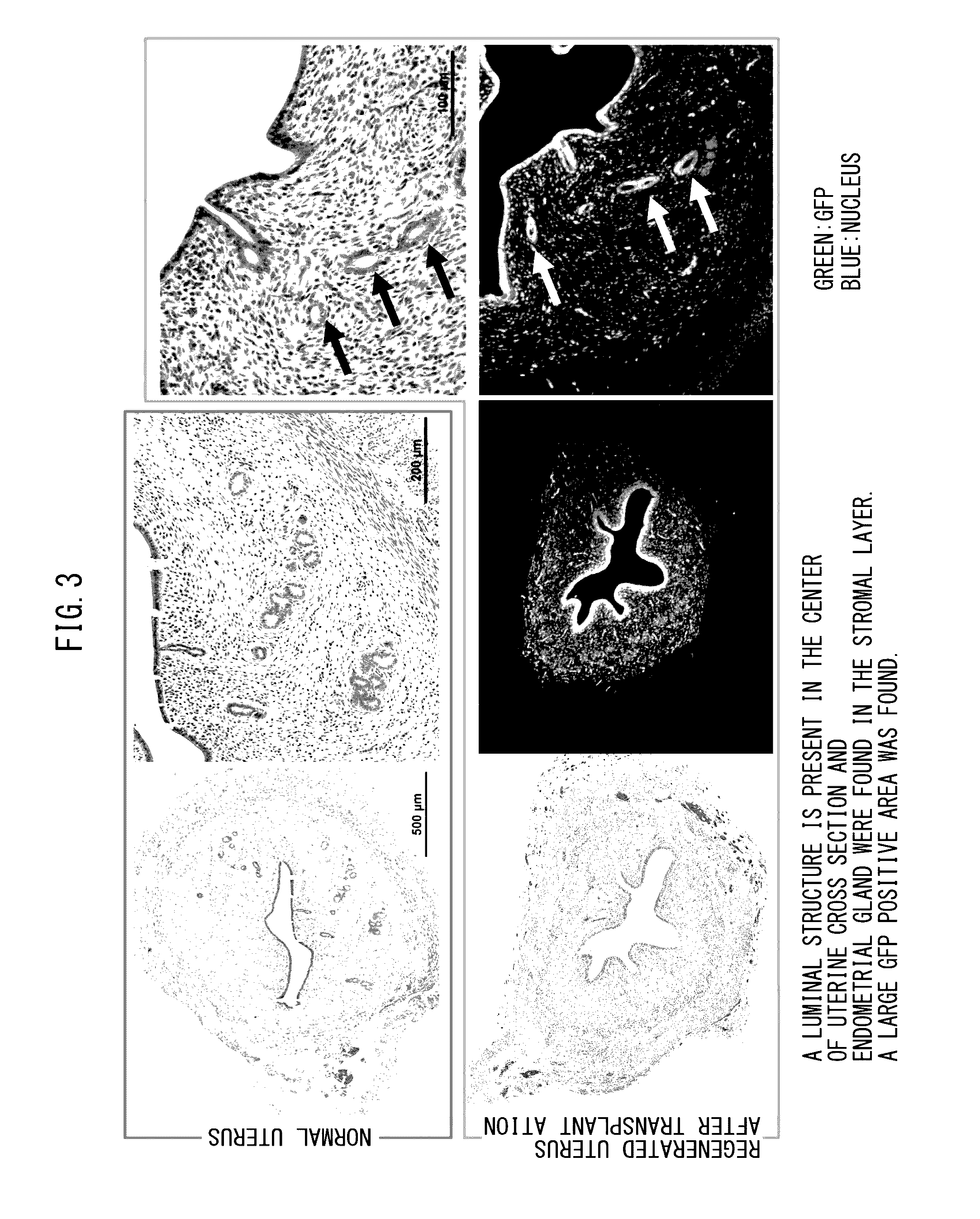Cell composition for treatment of uterine tissue and method for producing same
- Summary
- Abstract
- Description
- Claims
- Application Information
AI Technical Summary
Benefits of technology
Problems solved by technology
Method used
Image
Examples
example 1
In Vitro Evaluation of Layered Sheets
[0074]The layered cell sheets were placed on an ordinary insert (Falcon) and spread out by removing the medium. 2 mL of medium (DMEM / F12 (1:1) containing 10% FBS, 1% penicillin, 1% streptomycin and 1% Hepes) were placed in a 6-well plate. The layered cell sheets were then incubated for 3 days at 37° C. and 5% CO2 while in that state. Subsequently, the cell sheets were immobilized to a re-adhesive sheet in the form of 4% PFA while adhered to the membrane of the insert.
Tissue Evaluation and Immunostaining Evaluation
[0075]The cell sheets were embedded in paraffin, cut into thin sections and subjected to HE staining. Immunostaining was performed by activating using a pressure cooker using a pH 6 activator. Subsequently, blocking was performed for 2 hours with 10% goat serum. Following blocking, primary antibody such as GFP, CK18 or vimentin was allowed to react overnight at a ratio of 1:100 and 4° C. Secondary antibody was subsequently allowed to rea...
example 2
Cell Sheet Transplantation
[0077]Ten-week-old nude rats were laparotomized to expose the uterus. The uterus was then opened by making a longitudinal incision. The myometrium and endometrium were physically separated using tweezers under a microscope. The range of separation was targeted at a distance of 1 cm in the center of the uterus. After separating the endometrium and leaving only the myometrium, the uterus was stitched 5 points each on the left and right from both sides using 7-0 Nylon sutures and positioned at the transplant site so as to spread out on both sides. Subsequently, hemostasis was performed using a heated scalpel. The layered cell sheet in the manner described above was transplanted directly to the transplant site from the plastic sheet used during layring. Subsequently, wet gauze was placed around the transplant site and a 100 mm tissue cover was placed thereon to prevent drying. The cell sheet was allowed to take by remaining undisturbed for 1.5 hours while in th...
example 3
Mating and Evaluation of Pregnancy
[0080]FIG. 4 indicates the flow of an experiment for mating and evaluation of pregnancy. More specifically, female nude rats were housed with male nude rats in the same cages at 2 weeks after evaluation of the regenerated uterus by laparotomizing. The abdomens of the animals were observed using small animal ultrasonography under anesthesia 2 weeks after the start of cohabitation. Judgement of establishment of pregnancy was confirming gestational sac and fetus by ultrasonography. Individuals in which at least one fetus was confirmed in the normal right side uterus or either the transplanted or damaged left uterus were judged to be pregnant individuals. Individuals in which a gestational sac and fetus were unable to be clearly confirmed but were suspected of being pregnant (due to changes in uterine structure) were reevaluated several days later and were judged to be pregnant individuals based on the aforementioned criteria. Those animals that did not...
PUM
 Login to View More
Login to View More Abstract
Description
Claims
Application Information
 Login to View More
Login to View More - R&D
- Intellectual Property
- Life Sciences
- Materials
- Tech Scout
- Unparalleled Data Quality
- Higher Quality Content
- 60% Fewer Hallucinations
Browse by: Latest US Patents, China's latest patents, Technical Efficacy Thesaurus, Application Domain, Technology Topic, Popular Technical Reports.
© 2025 PatSnap. All rights reserved.Legal|Privacy policy|Modern Slavery Act Transparency Statement|Sitemap|About US| Contact US: help@patsnap.com



